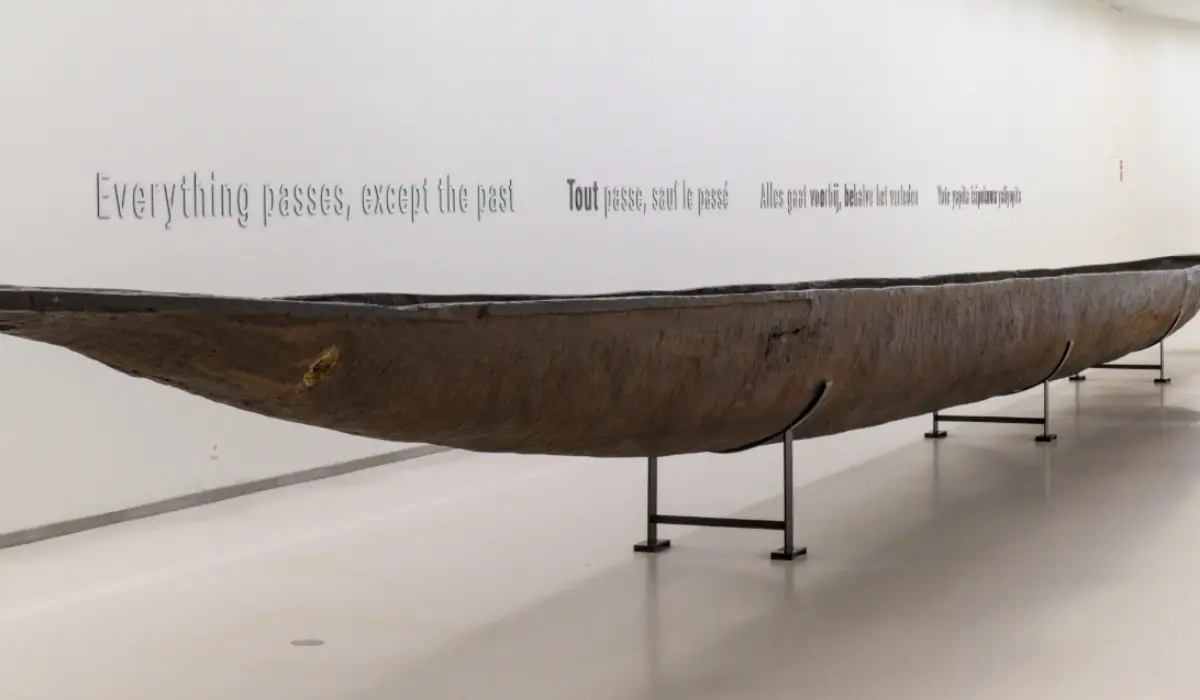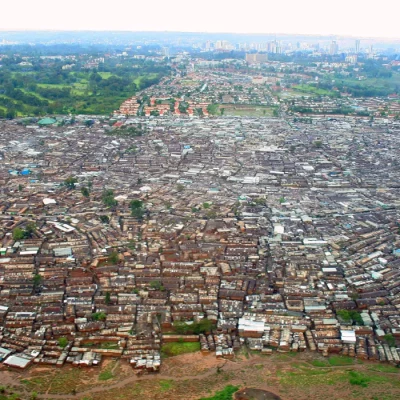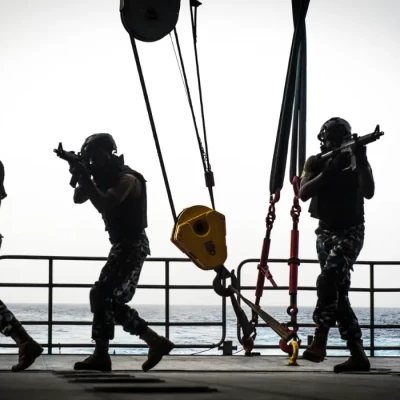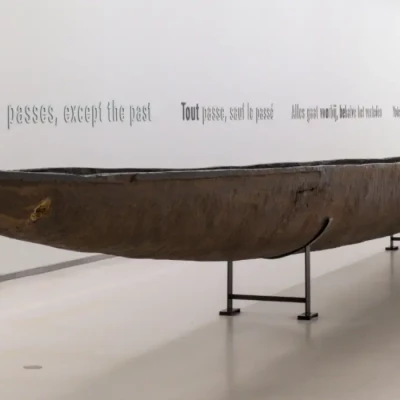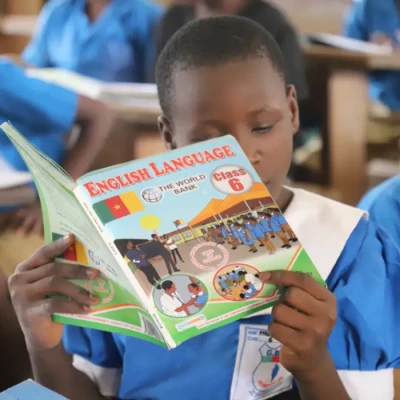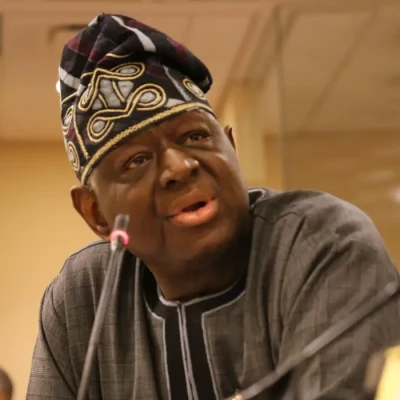East Africa has long been plagued by problems that prevent the region’s steady progression towards unity. There were attempts by the colonialists to create various tribal divisions and ethnic tensions alongside the struggle for independence and existing ethnic conflict. Through these challenges, community-building and regional peace initiatives have become a source of hope and light in the quest for peace. East Africa has great potential to overcome its fragmented past by tackling conflict and empowering grassroots communities to build unity and ensure progress. This paper discusses the Democratic Republic of the Congo (DRC) as a major roleplayer on this journey. The DRC, as the largest and the most resource-endowed country in the region, holds the potential to spur revolutionary development.1Malm, J. (2020) ‘“China-powered” African Agency and its Limits: The Case of the DRC 2007–2019’, policy brief, South African Institute of International Affairs. The DRC tackles its challenges of internal development through community development programmes and participation in East African peace efforts, which allows the country not only to contribute to the global agenda on unity in East Africa, but also to stand out as a regional contributor. This paper sheds light on the path to a more cohesive and resilient East Africa.
The historical context of division in East Africa
East Africa was significantly affected by social and political influence during the colonial period. The colonial powers of Belgium, Britain, France, and Germany subjugated the region and delineated it without consideration of tribal lands, thus creating several artificial states. This division had no specific criteria, and it generated horizontal ethnic conflicts and animosity that are still evident in the indigenous communities today. In addition, colonisation created structural injustices by favouring one ethnic group over another, which exacerbated imbalances and fuelled resentment.2Twikirize, J. M. & Spitzer, H. (2019) Social Work Practice in Africa Indigenous and Innovative Approaches, Kampala, Uganda: Fountain Publishers. The colonial powers likewise applied the divide-and-rule strategy by arousing ethnic and socioeconomic conflict to maintain control and prevent unity from developing among the indigenous people. The fact that these countries continued with such tactics aggravated ethnic divides and dissatisfaction, and this has hampered later efforts by the United Nations (UN) to bring the region together. Colonial authorities also built institutions of power that excluded certain groups of people, laying the foundation for post-colonial struggles.
The period after independence was characterised by power struggles, dictatorial rule, and economic mismanagement until the end of the 1960s in East Africa.3Fisher, J. (2020) East Africa after liberation: conflict, security and the state since the 1980s (Vol. 147), Cambridge: Cambridge University Press. The newly independent states were characterised by political instability, marginalised populations, and unrestrained ethnic parties when establishing their countries. Political instability and endemic corruption exacerbated socioeconomic differences and imposed divisions in society, so that peace efforts were difficult to establish and maintain. Ownership of oil, minerals, and fertile land was disputed by ethnic groups and competition persisted in the region, causing further division. The despotic actions of the ruling class, where the elite intentionally withheld and abused their access to resources, were the primary cause of widespread poverty and underdevelopment, which in turn resulted in complaints and prolonged periods of war.
While East Africa is experiencing internal worries, it also experiences pressure from outside forces that can cause disunity and insecurity. Boundary disputes, ethnic conflicts, and crises mark a new era of division and a reversal of integration.4Ndegwa, D. G. (2023) ‘Contemporary Forced Migration in Africa’, In: Makina, D. & Pasura, D. (Eds), Routledge Handbook of Contemporary African Migration, Abingdon, UK: Routledge, pp. 182–196. The Rwandan Genocide, the civil war in South Sudan, and the current situation in the eastern DRC have caused much suffering, created fragile relationships among neighbours, and blocked unity. In addition, foreign interference from neighbouring governments and ambitious external parties engaged in wider geopolitical games have contributed to destabilisation and continuing disagreements, which makes the issues harder to resolve and entrench regional cooperation. The presence of non-state actors, such as armed groups and terrorist organisations, also renders the situation more complicated and threatens peace.
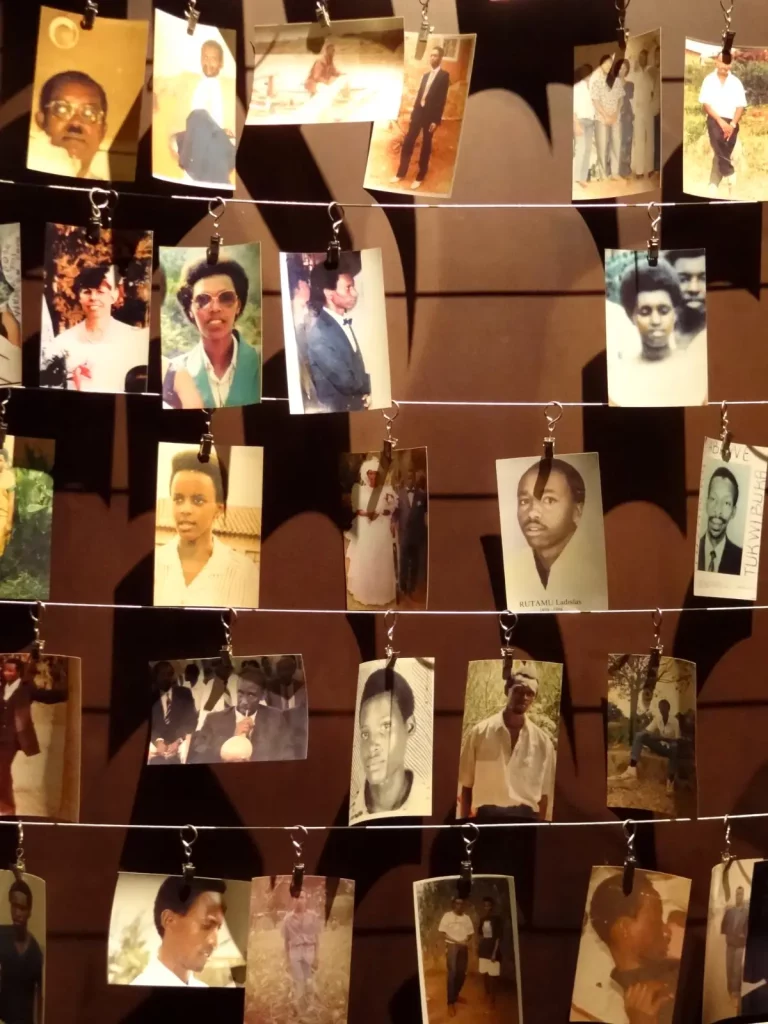
Jones).
Community growth initiatives in the DRC
The support of trained people and institutions and building governmental systems in the DRC are the most effective strategies for community development. Institutional problems, such as corruption, inefficiency, and a lack of transparency, have been the stumbling blocks to development and social justice in the DRC.5Moïse, R. E. (2019) ‘Making Community Forestry Successful in DRC: Anthropological Perspectives on Community-Based Forest Management’, London, Rainforest Foundation UK. The challenges are addressed through the decentralisation of powers and community empowerment centres. Through the advances in decentralisation policies, local governments can take care of community needs without much interference from the national government. Through this, citizens are given the chance to attend discussions on decision-making, hold leaders accountable, and prioritise sustainable development initiatives that represent their preferences. Leaders at the local and regional levels both participate in and receive training for more efficient utilisation of the existing resources and provision of services.
Access to education and healthcare are significant empowerment factors that should be considered for community growth, sustainable development and poverty reduction in the DRC. Education and health facilities also serve as instruments of social justice. The DRC faces many barriers, such as poor infrastructure, lack of financing, and development imbalances, that make it difficult to provide rural and poor areas with basic services, including water and electricity. Obstacles will be resolved by increasing the amount of education and healthcare services available. This ranges from the construction of schools and hospitals to paying teachers and doctors and offering scholarships to help disadvantaged individuals. Some communities design campaigns or engagement activities that allow members to learn and provide healthcare.
Poverty eradication and development are significant societal initiatives for the DRC to pursue. Despite the DRC being among the richest nations in terms of natural resources, it is also one of the poorest countries in the world, with many citizens lacking access to the most basic needs.6Badibanga, T. & Ulimwengu, J. (2020) ‘Optimal investment for agricultural growth and poverty reduction in the Democratic Republic of Congo: A two-sector economic growth model’, Applied Economics, 52(2), 135–155. Unemployment, under-servicing of citizens, and poor infrastructure are the major obstacles to economic progress and cause social inequities. Policies for sustainable economic growth and reduction of poverty are currently being developed. This encompasses stimulating small- and medium-sized enterprises, boosting the output of agricultural commodities, investing in infrastructure, subsidising the cost of water and energy, and providing loans and free seedlings to primary farmers.
Private investors are funding enterprises that aid in the reduction of poverty, social safety nets are being adopted, and cash transfer programmes are being implemented to help the poor live better lives and improve their levels of income. Infrastructure and local governance improvements can also foster economic development and poverty reduction. These interventions are poverty mitigations and help strengthen local communities, which, in turn, improves the country’s development and peace.
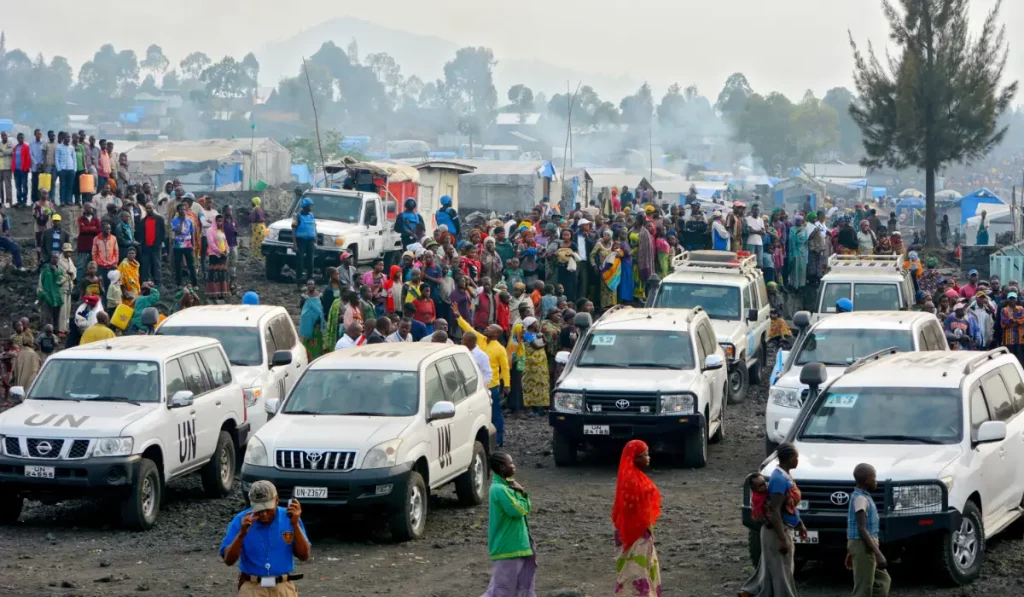
Regional peace initiatives in the DRC
The African Union (AU) is the continent’s leader in the mediation of disputes, conflict prevention, and peace talks, thus putting the DRC on its agenda. The AU has charged the Peace and Security Council, as well as its specialised committees, with giving political, logistical, and financial backing for the promotion of peace in Africa. The East African Community (EAC), comprising Burundi, Kenya, Rwanda, South Sudan, Tanzania, and Uganda, is an economic bloc that also contributes to the peace processes of the DRC by negotiating on core issues and reconciling the parties.7Ogunnoiki, A. O. (2019) ‘Armed conflict in resource-endowed African states: A case study of the Democratic Republic of Congo (DRC)’, International Journal of Advanced Academic Research, 5(1), 18–37. Shuttle diplomacy and mediation by the EAC at the highest level have eliminated tensions and fostered communication. The EAC strengthens regional collaborations and integration, which is crucial for trans-border security and stability in the Great Lakes region.
The DRC’s problems have recently been addressed by diplomatic and reconciliation mediation efforts, which have contributed to peace in the region. In addition to the countries involved in diplomacy, the UN and regional organisations have played a role in encouraging dialogue, ceasefire agreements, and peacekeeping efforts. Burundi’s peacebuilding and transitional justice processes started with the Lusaka Agreement, Sun City Agreement, and Nairobi Communiqué. The UN Secretary-General and others have assigned the UN statutory bodies’ special representatives and envoys with functions to fill gaps, create trust, and render all-encompassing peace negotiations. Where diplomats were in the past encountering hurdles to reach peace in the DRC, they now seem to be involved in long-term reconciliation measures coordinated with government officials, rebel leaders, civil society, and local populations.
Peace operations and security arrangements to mitigate threats in and to the DRC are present in the region. The DRC hosts one of the largest peacekeeping forces in the world, the UN Organisation Stabilisation Mission in the DRC (MONUSCO), which is mandated to guard civilians and assist state institutions, as well as helping disarm and demobilise various armed groups. MONUSCO aided in averting violence, supporting humanitarian efforts, and facilitating peacebuilding.
Neighbouring countries, such as Rwanda, Uganda, and Angola, have also provided soldiers and resources to DRC peacekeeping missions. This is a good example of regional cooperation and indicates that leaders understand the importance of finding a solution to the security situation in the DRC. Regional cooperation in the military sphere, intelligence-sharing, and border security have facilitated communication and strengthened the war against threats like military groups, drug trafficking, and terrorism. Regional peace, solidarity, and the DRC’s development are dependent upon some regional structures, diplomatic initiatives, and peacekeeping missions. Multilateral initiatives are aimed at building dialogue, trust, and cooperation in the security sphere that would result in the resolution of conflicts, consolidation of peace, and regional cooperation.
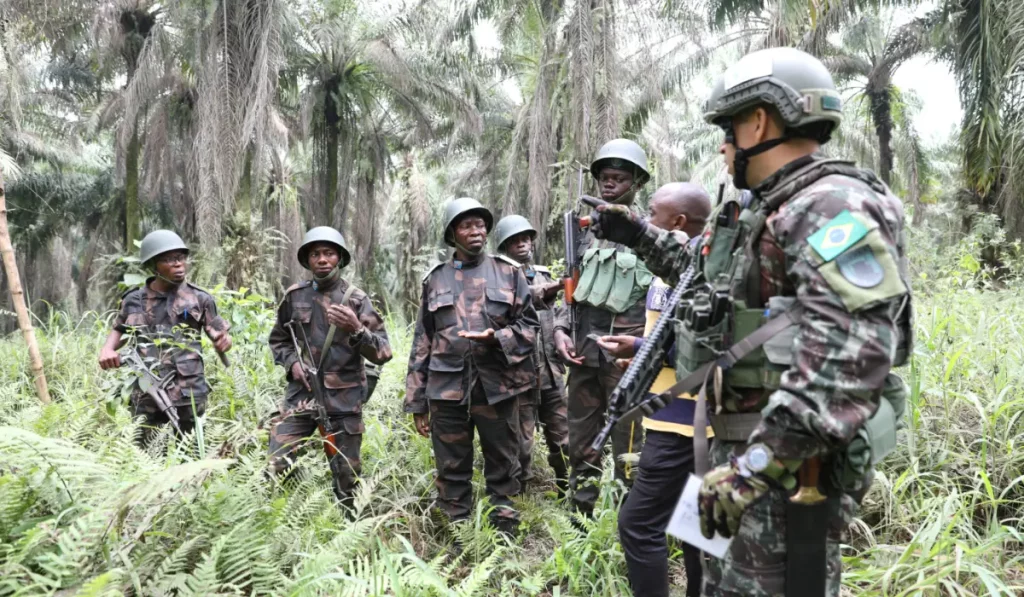
Challenges and obstacles
Ethnic conflict and past trauma contribute to the disruption of peace and stability in the DRC. The main barriers to the resolution of historical injustices, such as land dispossession and exclusion, have defined ethnic and race relations. As a result, the situation has worsened, further delaying the processes of reconciliation and unity.
Political unrest and conflict in governance are some of the greatest issues in the DRC that prevent peace and development.8Al-Makura, A. H. M. (2021) The Challenges and Effects of Violent Conflict on Development: A Study of The Democratic Republic of Congo (DRC), doctoral dissertation, Baze University. Lawlessness is instigated by weak institutions, corrupt practices, and governance structures, thus making it difficult for people to trust state systems. Longstanding internal conflict among the political elite increases the tensions that lead to chronic instability, inhibiting governance and inclusive decision-making processes.
In the DRC, existing inequalities in the economy and competition for natural resources worsen the conflicts. Despite rich mining resources, the DRC is one of the poorest nations in the world, with widespread poverty and inequality. Discrimination and competition for resources lead to anger and social tension, resulting in local governments struggling to confiscate profitable products like diamonds, gold, and coltan. There are many complex issues involved in ethnic tension and governance, and economic gaps may hinder peace, unity and a platform for the development of the people of the DRC. However, the hope for Africa’s well-being still lies in the hearts of the good leaders of the countries involved. Developing reconciliation processes, institutional reforms, and the provision of socioeconomic services will constitute key steps in the elimination of such challenges, which will help to set the stage for the emergence of vibrant and prosperous living standards for all Congolese people.
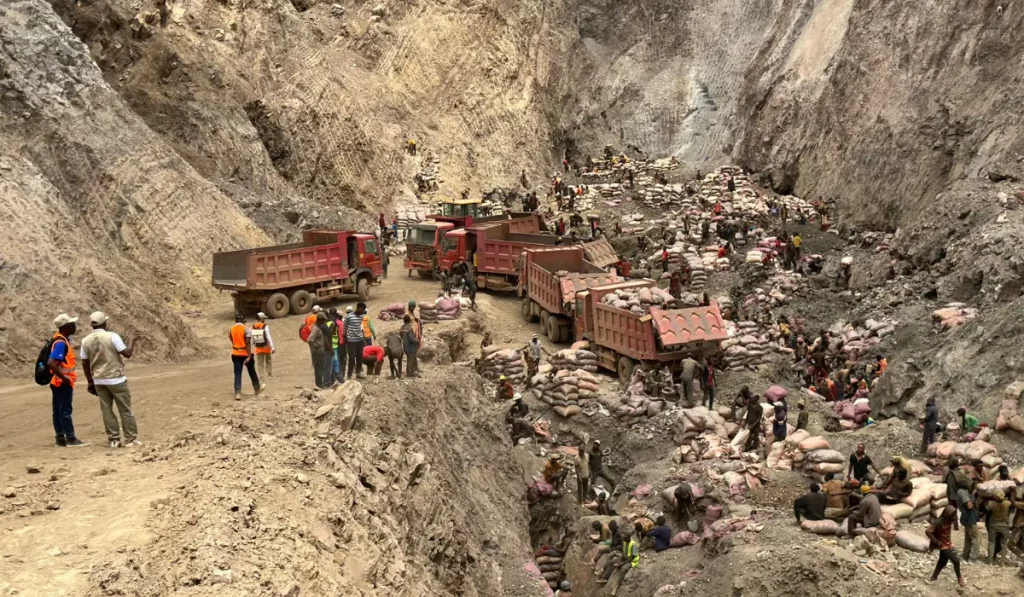
Success stories and case studies
There are several case studies from the DRC in which community development projects have yielded positive results and aided the community. Community development schemes centring on cooperatives and microfinance programmes help the rural population overcome poverty by giving them access to credit, training, and market opportunities. Various projects that promote diversification of livelihoods and increased productivity have ensured food security and reduced poverty, and created social harmony in the community.
Furthermore, there has been an increase in community-based healthcare initiatives, which include mobile clinics and community health worker networks that have facilitated the delivery of essential services and improved health outcomes in the most remote and underprivileged areas with poor access to healthcare.9Democratic Republic of Congo (2021) Democratic Republic of Congo Constitution, pp. 5–6. Such principles highlight the possibility of the bottom-up strategy as a way of driving sustainable development and building the resilience of communities all over the DRC.
The DRC and the Great Lakes region have witnessed the positive impact of some significant peace initiatives promoting the restoration of stability. The Peace, Security, and Cooperation (PSC) Framework for the DRC and the Great Lakes Region was signed in 2013, which brought on board as signatories regional leaders, international partners, and main actors with the agenda of fostering peace in this regional bloc. The Framework has had positive impacts, such as the fall of the rebel armies, destruction of arms, and carrying forward of political reforms and reconciliation.
In addition, the regional peacekeeping missions, including the Force Intervention Brigade within MONUSCO, have contributed greatly to the stability of conflict-ridden areas and civilian protection from violence. This is an indication that there is a need for cooperation and collaboration regionally in dealing with common security problems. Lessons and good practices from the DRC and other countries in the region provide examples that could be used for promoting unity in East Africa. Joint, common and consultative governance that involves as many people as possible is an important facilitator in building trust and strengthening the social cohesion of diverse communities. Inclusion of marginalised groups and their representatives in the government is fundamental for inclusive development and solving historical issues.
Regional cooperation and dialogue are vital for the resolution of transnational challenges, such as conflict, migration, and climate change. By building intergovernmental ties and creating an appropriate atmosphere of good neighbourliness, East African countries will cooperate towards common goals and overcome shared challenges to unity and peace.
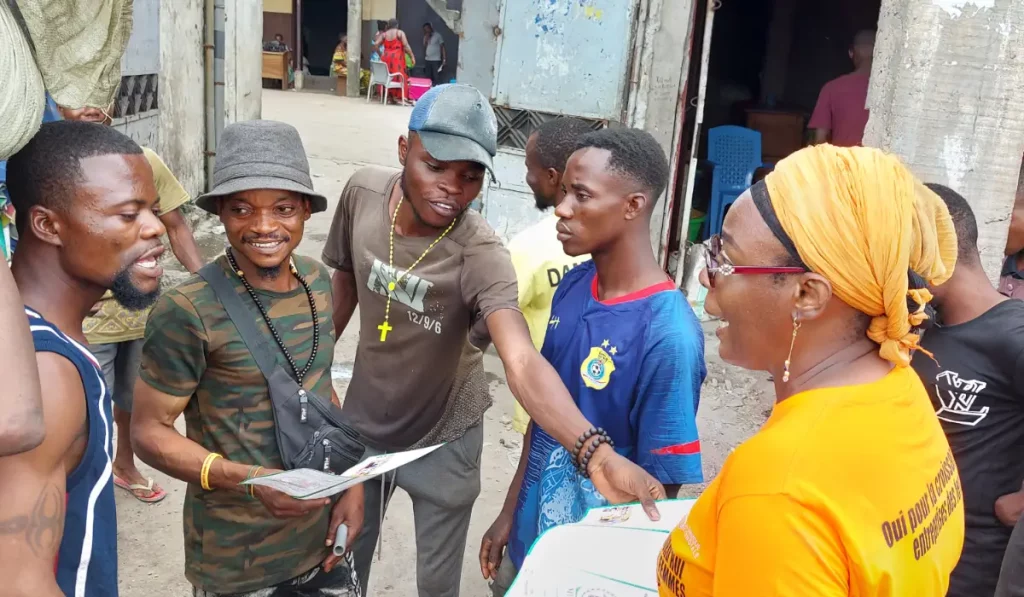
Future prospects and recommendations
The possibility of a prosperous future for East Africa rests on collaborative efforts that will unlock the potential for integration and allow the region to cooperate on common regional challenges and sustainable development. Enhanced cross-border cohesion stretches into trade, infrastructure development, and security, thus opening up economic benefits, expanded commerce between the participating states, and inclusive development. Currently, efforts such as the African Continental Free Trade Area (AfCFTA) create the conditions for increased cooperation among countries, including the free movement of goods, services, and people across borders.10Apiko, P., Woolfrey, S. & Byiers, B. (2020) ‘The promise of the African Continental Free Trade Area (AfCFTA)’, European Centre for Development Policy Management (ECDPM) discussion paper 287, pp. 1–16. Furthermore, these advantages can be enhanced through educational, human development, and innovation channels, which drive the youth population and encourage economic transition and achievement.
The last stage of the process towards a unified East Africa is the inclusivity of governance complemented by the fair distribution of resources and sustainable development. Improvement of democratic structures and the rule of law and fighting corruption will aid in the production of an accountable and transparent anti-corruption policy for the state. Appropriately allocating resources to social services, such as education, healthcare, and social protection, among others, is critical in improving the living standards and human development outcomes of the people and thus reducing inequality. Resolving environmental degradation, climate change, and natural resource management-related concerns are imperative moves towards building the resilience and sustainability demanded by the current global predicament.
Stability is important in the commitment to unity and peacebuilding, as these plans are the long-term anchor for the restoration and prosperity of East Africa. Trust creation, conversations on critical issues, and partaking in reconciliation between the communities are primary approaches to solving problems of historical grievances and the creation of a common vision. A good investment is in measures that are targeted at avoiding violence as well as investment in peace education and social harmony, as this reduces the possibility of conflict and establishes a culture of tolerance and respect for diversity. By involving young people and marginalised individuals in the decision-making and transformation process of societies, communities can progress from unjust and discordant to more cohesive and inclusive.
Conclusion
Throughout this article, the building of East African unity has been presented with explicit reference to community development and the mediation of peace in the DRC. Colonial remnants, as well as previous and current post-independence hurdles, were recognised, and the problems of the day, such as inter-ethnic tension, bad governance, and economic inequalities, were also considered. While there are numerous challenges, some success stories in community development and peace initiatives in the region exist, illustrating that there is the capacity for change. As the DRC is one of the largest and most resource-rich countries, its moves towards community development and regional peace may bring confidence, stability and large-scale development to the region. In future, peace and reconciliation in the region will be appreciated more when community growth and peacebuilding ventures are not neglected in East Africa. Democratic rule, economic empowerment and regional integration are among the things that will guide prosperity and unity among East Africans. Let us, therefore, turn this call into a path of action and walk together to the realisation of the East African Union, viz, a more peaceful and integrated East Africa.
Faith Chelangat Tonui is a peacebuilder from Kenya who is passionate about young people’s involvement in peace and advocacy processes. Faith served as the Coordinator for the International Service Worker Programme at Mennonite Central Committee (MCC), and previous held the position of Eastern Africa Peacebuilding Programme Coordinator at Hekima University College in Kenya.

